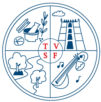“We try to hear the acoustic environment as a musical composition and further, we own responsibility for its composition” … Murray Schafer (1977)
Acoustic ecology is an emerging discipline, which is concerned with the right kind of atmospheric sounds which are healthy to the human and the animal populations. Also referred to as ‘soundscape ecology’, this budding discipline has emerged with the increase in noise pollution, caused by industrialization, commercialization, and urbanization. Significant increase in mass movements of people by road, rail and air has also significantly contributed to increase in noise decibels.
The increased noise levels are well recognized for contributing towards mental tension, causing heart-rate variability and social unrest.
Thus, the concept of ‘acoustic value’ does not remain with our eardrums; it even touches the brain-stem and neurons which decide our thinking and behaviour! The arrival of a new branch of science, ‘sonic sociology’ promises orderliness in the soundscape of our towns and metros. Acoustic ecology deals with the relationship which is mediated through sound between living beings on the planet and their surroundings.
As a subject, studies on acoustic ecology started somewhere in the mid-twentieth century at Simon-Fraser University at Vancouver, Canada as a part of the world soundscape project. Its first study, titled ‘The Vancouver Soundscape’ created similar interests elsewhere, which eventually led into the formation of the world forum of acoustic ecology in 1993.
From the initial ideas of the pioneering team led by R. Murray Schafer (a musician, composer and former Professor of Communication Studies), the subject has undergone certain healthy divergence in recent years. Thus, the sonic impacts of road and airport construction, widespread networks of “phonographers” exploring the world through sound, the broadening of bioacoustics, (the use of sound by animals) to consider the subjective and objective responses of animals to human noise have come to occupy in recent studies on acoustic ecology.
A Sound Movement and the Eye Culture
The profundity of Schafer’s message is currently hidden behind a single expression: noise pollution, articulated by the environmental acousticians. Schafer’s starting point was however, to note the incredible dominance of the visual modality in society – “eye culture”, as it has been termed. He noticed that due to this, the child’s ability to listen was deteriorating. So concerned was Schafer about this problem that he argued passionately for listening skills to become an integral part of the national curriculum. Schafer both demonstrated and addressed the issue – which he termed “sonological competence” – through the practical exercises he developed in working with music students. The exercises included the following:
- Listing down any five sounds (not music) emanating in, the environment.
- Listing down five sounds (not music) one likes.
- Listing down five sounds (not music) one doesn’t like.
During the exercise, it was noticed that many students were never able to recall ‘consciously’ having heard any sounds (non-music) during the day, and many could not complete the sound list even after a time-lapse of fifteen minutes. Schafer’s response to this problem was to develop a range of what he called the “ear clearing” exercises. This included “soundwalks”, a walking meditation aimed at maintaining a high level of sonic awareness.
In his book, “The Tuning of the World” (1977) which is a comprehensive text on the acoustic ecology, he defined the background sounds as ‘key notes’ (in analogy to music where a keynote identifies the fundamental tonality of a composition around which the music modulates) and the foreground sounds (intended to attract attention) as “sound signals”. Sounds that are particularly regarded by a community and its visitors were called ‘soundmarks” – in analogy to landmarks. The natural examples include geysers, waterfalls and wind traps while cultural examples include distinctive bells or gongs and the sounds of traditional or ritualistic activities.
Schafer’s terminology helps to express the idea that the sound of a particular locality (its keynotes, sound signals and soundmarks) can – like local architecture, customs and dress – express a community’s identity. Thus, the human settlements could be distinguished by their soundscapes. Unfortunately, due to the industrial revolution, an ever increasing number of original unique soundscapes have disappeared completely or submerged into the cloud of homogenised, anonymous noise that is the contemporary city soundscape, with its ubiquitous keynote – traffic, the terrific!
This article was published in My Doctor – December 2007 – Pages 44, 45
Edited by Geeta Shreedar, July 14, 2021
